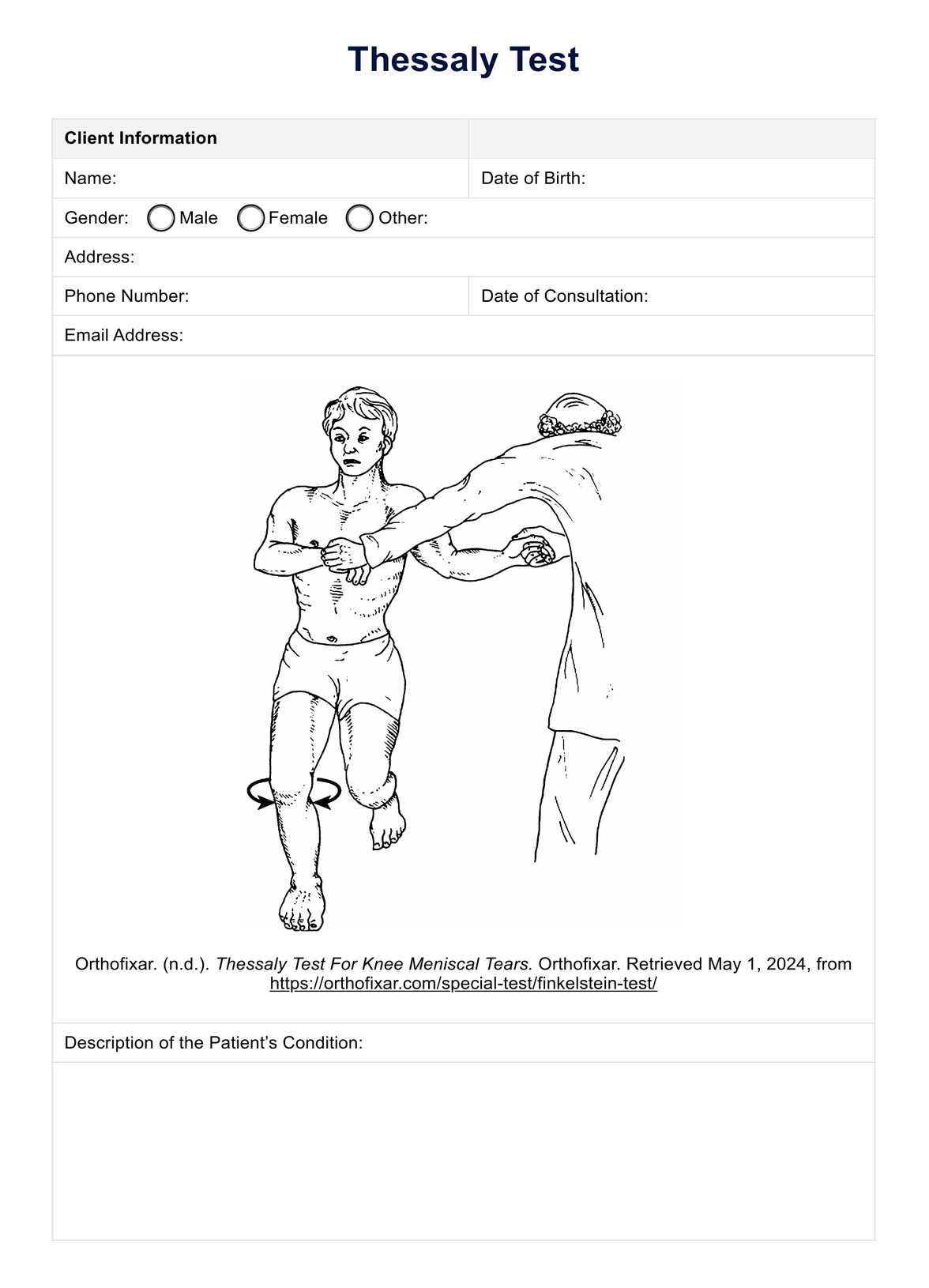The Thessaly Test is a cutting-edge clinical test used to identify meniscal injuries in the knee, and it was initially introduced in 2005 by Karachalios et al.

Thessaly Test
The Thessaly Test: Assess meniscal stability in the knee. Reliable, non-invasive evaluation tool for diagnosing meniscal injuries.
Thessaly Test Template
Commonly asked questions
To use Thessaly's Test, the patient stands on one leg with the other leg bent. The clinician rotates the bent leg internally and externally while assessing for any pain, discomfort, or clicking sensations in the knee joint.
The Thessaly Test does not have a standardized scoring system, but subjective scoring can be used to evaluate the severity and frequency of symptoms reported by the patient, such as using a pain scale or noting the presence/absence of clicking or locking sensations.
EHR and practice management software
Get started for free
*No credit card required
Free
$0/usd
Unlimited clients
Telehealth
1GB of storage
Client portal text
Automated billing and online payments











